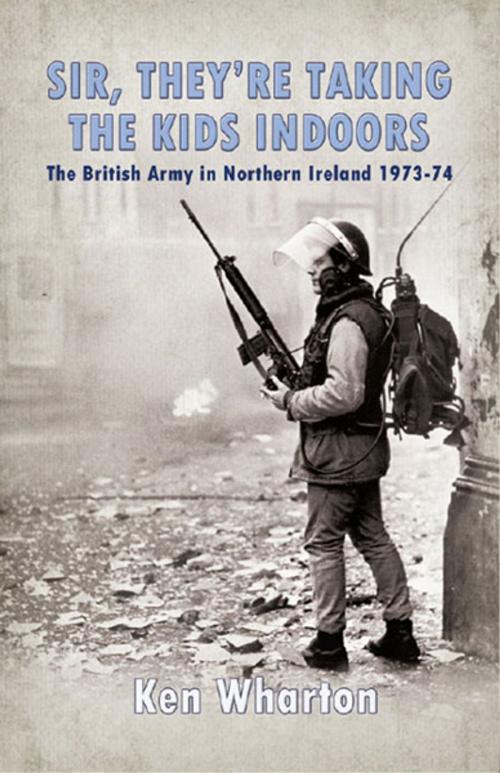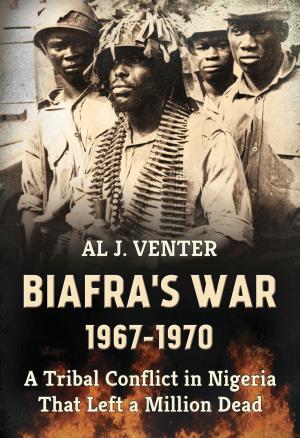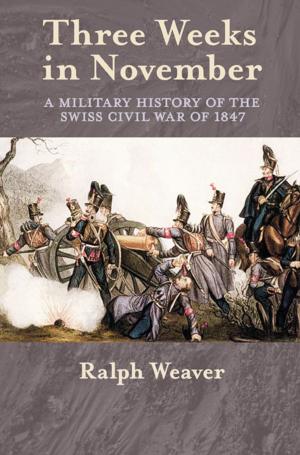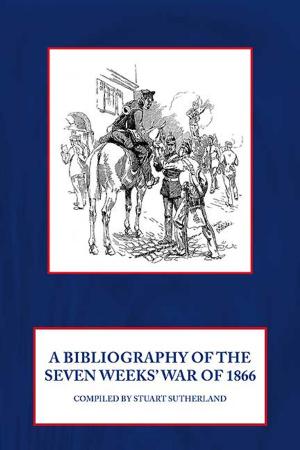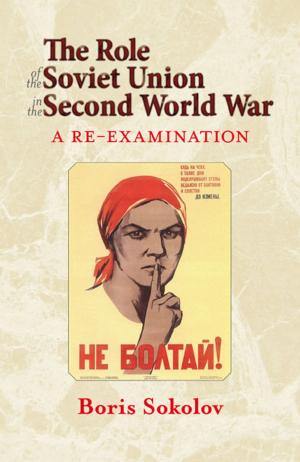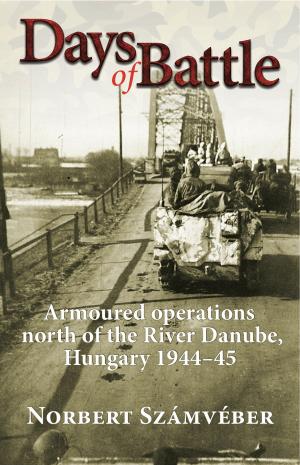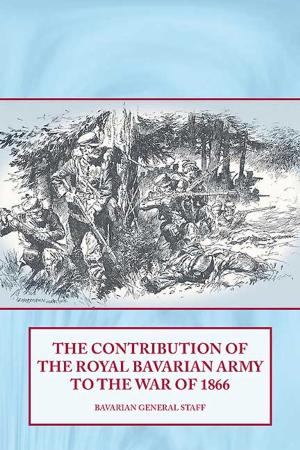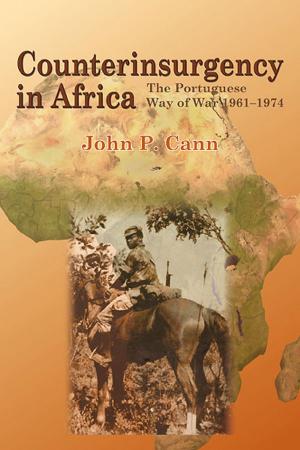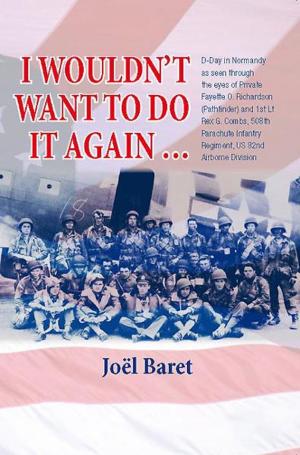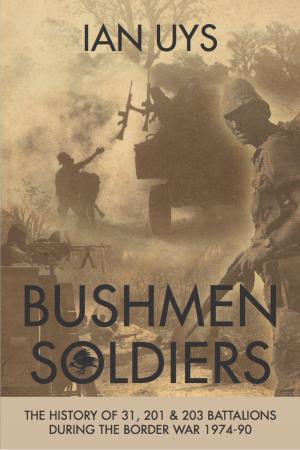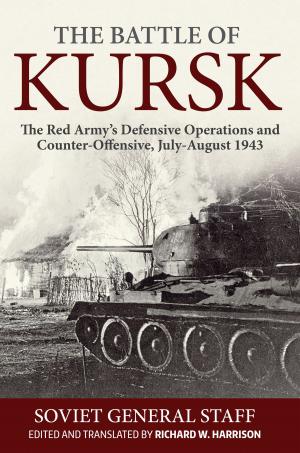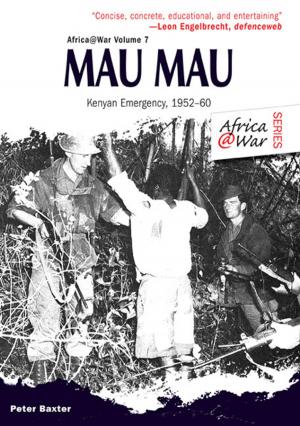Sir, They're Taking the Kids Indoors'
The British Army in Northern Ireland 1973-74
Nonfiction, History, Modern, 20th Century| Author: | Wharton, Ken | ISBN: | 9781908916778 |
| Publisher: | Helion and Company | Publication: | September 19, 2012 |
| Imprint: | Helion and Company | Language: | English |
| Author: | Wharton, Ken |
| ISBN: | 9781908916778 |
| Publisher: | Helion and Company |
| Publication: | September 19, 2012 |
| Imprint: | Helion and Company |
| Language: | English |
This is Ken Wharton's eagerly awaited new book chronicling the Northern Ireland troubles from the British soldier's perspective. His finest book to date, surpassing his 2011 work "The Bloodiest Year - Northern Ireland 1972", looks at the bloody period of 1973/4 and features many contributions from those who were there besides superb and painstaking research. 'Sir, they're taking the kids indoors' was a cry heard by most if not all of the British soldiers who served on either the 4 month emergency or the 2 year resident battalion tours of Northern Ireland. It refers to the IRA tactic of warning the civilian population in Republican areas of the impending arrival of one of their gunmen. Clearly, as witnessed by the number of civilian deaths among the Catholic population directly or indirectly at the hands of their 'protectors' in the IRA, they were not averse to killing or causing the deaths of Catholics. Once the 'jungle drums' had warned mothers of the approaching death at the hands of the 'widow maker' they would bring their offspring indoors and thus give the IRA the 'moral high ground' of not shooting their own supporters. Once a soldier had called out these words to comrades, the patrol would know that the angel of death was in the area, never far away at the best of times. It would alert them to the fact that they had to be ready for something more lethal than the aimed bricks, Molotov cocktails, dead animals, dog excrement and used sanitary towels which the women of the Republican areas so charmingly saved for the optimum moment. It would herald the approach of a gunman or gunmen and the locals, especially those who reveled in the prospect of 'shooting a Brit' or adherents to the Provisionals' line of killing a soldier a day would have their sadistic hatred sated for a day at least at the sight of British blood staining the streets. One only need consult the roll of honor in any of Ken's books to know that there were many streets in Belfast and Londonderry where the Republican mobs had danced in the blood of a young man from England, Scotland, Wales or even their own Northern Ireland - Spamount Street, New Lodge; Flax Street, Ardoyne; Glenalina Gardens, Ballymurphy; Ardmonagh Gardens, Turf Lodge; Shaw's Road, Andersonstown; Lecky Road, Londonderry and Iniscarn Road, Creggan, Londonderry. All saw British blood stain the tarmac; in some cases on more than occasion. The blinkered Irish-Americans so willingly, and sometimes not so willingly (there were generally IRA supporters on hand to 'encourage' contributions), gave their hard-earned dollars to support these people. The money was collected on the pretext that it was for the 'families of the men behind the wire' or alms for the people 'back home.' Huge sums were raised which, far from providing alms actually provided arms for the perpetration and perpetuation of the misery for over 1.5 million people living in Northern Ireland. But it wasn't just the Irish-Americans - Irish-Australians, Colonel Gaddafi of Libya and the provocateurs of the former USSR also played their part. By focusing exclusively on the 1973-74 period, Ken has been able to write in greater detail than hitherto possible about the British Army and their experience during this bloody and important period of 'the Troubles'.
This is Ken Wharton's eagerly awaited new book chronicling the Northern Ireland troubles from the British soldier's perspective. His finest book to date, surpassing his 2011 work "The Bloodiest Year - Northern Ireland 1972", looks at the bloody period of 1973/4 and features many contributions from those who were there besides superb and painstaking research. 'Sir, they're taking the kids indoors' was a cry heard by most if not all of the British soldiers who served on either the 4 month emergency or the 2 year resident battalion tours of Northern Ireland. It refers to the IRA tactic of warning the civilian population in Republican areas of the impending arrival of one of their gunmen. Clearly, as witnessed by the number of civilian deaths among the Catholic population directly or indirectly at the hands of their 'protectors' in the IRA, they were not averse to killing or causing the deaths of Catholics. Once the 'jungle drums' had warned mothers of the approaching death at the hands of the 'widow maker' they would bring their offspring indoors and thus give the IRA the 'moral high ground' of not shooting their own supporters. Once a soldier had called out these words to comrades, the patrol would know that the angel of death was in the area, never far away at the best of times. It would alert them to the fact that they had to be ready for something more lethal than the aimed bricks, Molotov cocktails, dead animals, dog excrement and used sanitary towels which the women of the Republican areas so charmingly saved for the optimum moment. It would herald the approach of a gunman or gunmen and the locals, especially those who reveled in the prospect of 'shooting a Brit' or adherents to the Provisionals' line of killing a soldier a day would have their sadistic hatred sated for a day at least at the sight of British blood staining the streets. One only need consult the roll of honor in any of Ken's books to know that there were many streets in Belfast and Londonderry where the Republican mobs had danced in the blood of a young man from England, Scotland, Wales or even their own Northern Ireland - Spamount Street, New Lodge; Flax Street, Ardoyne; Glenalina Gardens, Ballymurphy; Ardmonagh Gardens, Turf Lodge; Shaw's Road, Andersonstown; Lecky Road, Londonderry and Iniscarn Road, Creggan, Londonderry. All saw British blood stain the tarmac; in some cases on more than occasion. The blinkered Irish-Americans so willingly, and sometimes not so willingly (there were generally IRA supporters on hand to 'encourage' contributions), gave their hard-earned dollars to support these people. The money was collected on the pretext that it was for the 'families of the men behind the wire' or alms for the people 'back home.' Huge sums were raised which, far from providing alms actually provided arms for the perpetration and perpetuation of the misery for over 1.5 million people living in Northern Ireland. But it wasn't just the Irish-Americans - Irish-Australians, Colonel Gaddafi of Libya and the provocateurs of the former USSR also played their part. By focusing exclusively on the 1973-74 period, Ken has been able to write in greater detail than hitherto possible about the British Army and their experience during this bloody and important period of 'the Troubles'.
